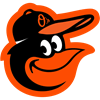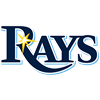The trade deadline ended up being better than I expected. I was rather pessimistic in the days leading up to the deadline, but the end result saw several names of fantasy interest moving around. Given that this was mainly a seller's market, we still saw some sizable names moved mainly because Steve Cohen and the Mets were willing to buy prospects to rapidly strengthen their farm system and push back their five-year plan by selling off Justin Verlander and Max Scherzer. The relocation of those two experienced arms is not likely to change much other than their ability to earn wins, as both may be reinvigorated now that they're back on contending teams and away from the media circus in New York.
However, other teams acquiring pitching will often do so because they both have a need and see a way to make a change with that pitcher to make him better. Just last year, we saw St. Louis acquire Jordan Montgomery and immediately make a change to his approach, helping Montgomery go 5-0 with a 1.47 ERA in his first 8 starts with St. Louis. The Astros famously reworked Gerrit Cole's approach from the Pittsburgh philosophy of sinkers down to fastballs up, and Cole has arguably been the best pitcher in baseball since the change. The Rays similarly reconstructed Tyler Glasnow, who can look as unhittable as anyone in baseball when he manages to stay on the mound.
I wanted to take a look at some
The trade deadline ended up being better than I expected. I was rather pessimistic in the days leading up to the deadline, but the end result saw several names of fantasy interest moving around. Given that this was mainly a seller's market, we still saw some sizable names moved mainly because Steve Cohen and the Mets were willing to buy prospects to rapidly strengthen their farm system and push back their five-year plan by selling off Justin Verlander and Max Scherzer. The relocation of those two experienced arms is not likely to change much other than their ability to earn wins, as both may be reinvigorated now that they're back on contending teams and away from the media circus in New York.
However, other teams acquiring pitching will often do so because they both have a need and see a way to make a change with that pitcher to make him better. Just last year, we saw St. Louis acquire Jordan Montgomery and immediately make a change to his approach, helping Montgomery go 5-0 with a 1.47 ERA in his first 8 starts with St. Louis. The Astros famously reworked Gerrit Cole's approach from the Pittsburgh philosophy of sinkers down to fastballs up, and Cole has arguably been the best pitcher in baseball since the change. The Rays similarly reconstructed Tyler Glasnow, who can look as unhittable as anyone in baseball when he manages to stay on the mound.
I wanted to take a look at some of the other pitchers dealt at the deadline to see if their new clubs have made any adjustments so we can decide whether to adjust our expectations or projections for that pitcher the rest of the season. Let's start with Montgomery, because Texas has indeed made a tweak.
Montgomery has always been a kitchen-sink type guy capable of throwing four or five pitches in any one game. The Yankees reportedly had him reduce the usage of his four-seamer, while the Cardinals quickly gave it back to him after the acquisition last season. Texas hasn't taken either pitch away from him, but the team has apparently encouraged him to use his mostly-ignored cutter again as his first outing with Texas saw him throw 13 cutters, which nearly doubled his cutter usage for the entirety of 2023.
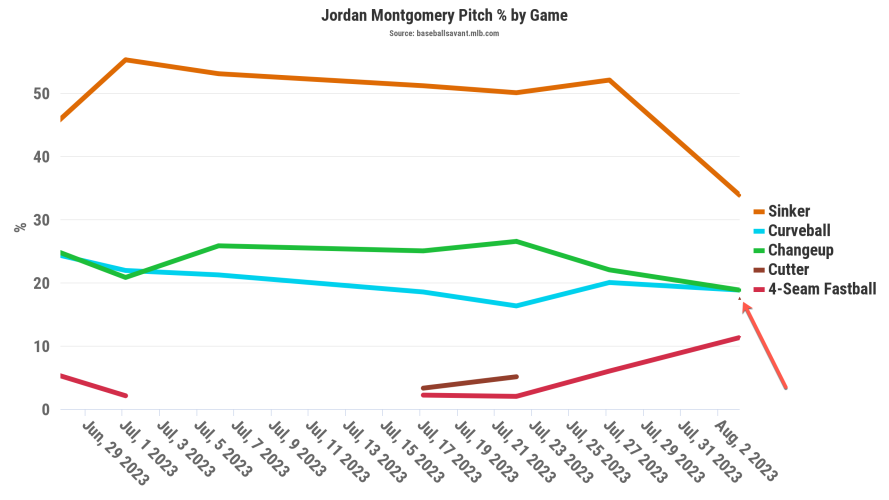
Montgomery had occasionally tossed one in in recent weeks, but in his first outing with Texas, Montgomery spiked up the four-seamer, cut back on the sinker, and added the cutter in to righties. Now both righties and lefties have to consider four different offerings coming their way, which makes it tougher on them the second and potentially third time through the order. The relocation to Texas and the adjustment to Montgomery's repertoire should greatly enhance his fantasy value the rest of this season.
Let's stick with St. Louis exports and see what Baltimore has done with Jack Flaherty. Flaherty has six different pitches in his bag of tricks. When I see that, I am reminded of the sage advice from Jeff Zimmerman:
Flaherty most frequently throws his four-seamer, slider and curveball, using that trio of pitches 85 percent of the time. The league has hit .294 off the combination of the first two offerings but .165 off his curveball. Naturally, Baltimore took on Flaherty and went with the shock factor and had him use his cutter more in his Oriole debut, a pitch the league has hit .342 against this season:
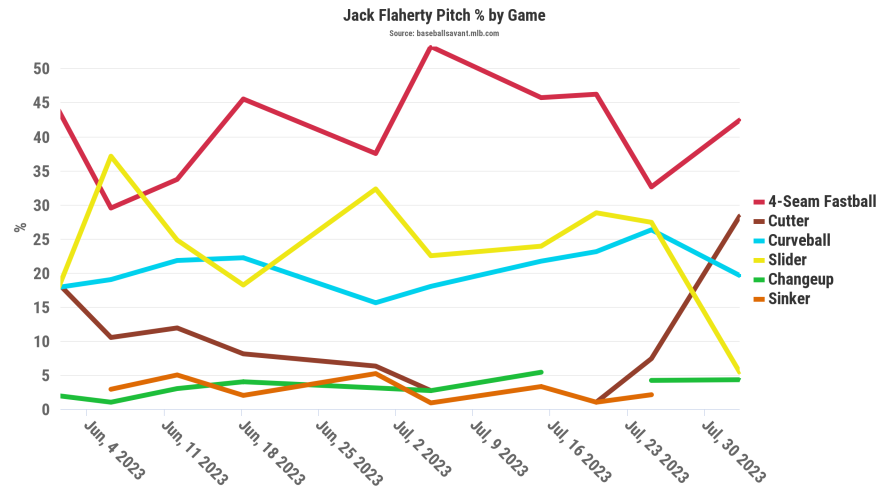
The cutter had all but disappeared in recent outings, but Baltimore gave Flaherty the Kyle Gibson blueprint, giving the cutter back to him while taking away his slider. Flaherty threw 26 cutters and allowed two singles with the pitch in his first Orioles start. The apparent change appears to be slider usage against righties, as Flaherty used just one of his five sliders against righties while evenly distributing the 26 sliders he threw in his final outing with St. Louis.
We have already seen what pitching for Baltimore has done for Kyle Gibson, and Flaherty has the stuff to fit into that same mold, taking advantage of the home park and the improved defense around him. Ironically, Flaherty's first start of 2023 came against Toronto where he no-hit them over five innings but allowed seven walks. His first start since the trade, also against Toronto, saw him scatter six baserunners over six innings with eight strikeouts with the new approach.
The Rays acquisition of Aaron Civale was surprising both in that the club dealt away a top prospect in Kyle Manzardo as well as the fact that Civale was the type of pitcher the club wanted. Kyle Snyder and the Rays do love spin masters, and Civale is one of the best there is in that regard given his success depends on it with his lack of velocity. LIke Flaherty, Civale has thrown six different pitches this season, with his cutter and curveball serving as his bread and butter. The immediate change to Civale appears to be him following Zimmerman's advice, because the splitter and slider did not make an appearance in his Rays debut:
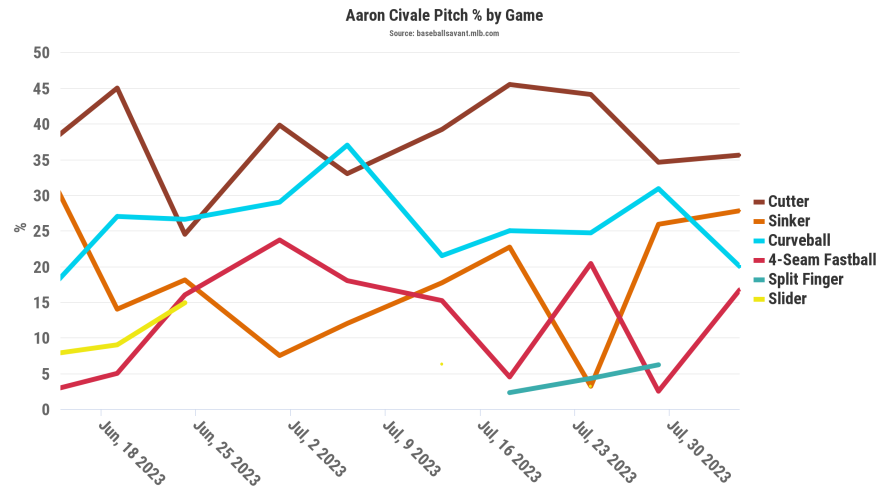
The outing against Detroit did not go well for Civale, as he took the loss with Detroit making the most of every scoring opportunity while the Rays failed to score in the 9th inning despite three walks in a 4-2 loss. I want to chalk this outing up to Detroit's familiarity with Civale, but I wouldn't expect much else to change with Civale's approach and would expect his fantasy value to remain unchanged by relocation.
Lance Lynn has been an abysmal fantasy pitcher this year, with atrocious ratios despite a career-best K/9. How does that even happen? The homers have been a huge problem this season, as Lynn has a 2.2 HR/9 rate, and that didn't change in his first outing with the Dodgers, as all three runs he allowed came off home runs. The good news was he walked just one batter and struck out seven over seven innings. The big problem for Lynn this season has been struggles with lefties, who have a healthy .325/.386/.614 slash line against him compared to a .211/.286/.398 line for righties. The Dodgers made a quick tweak to Lynn's approach to lefties, and he allowed just two hits in his 15 plate appearances against lefties in his Dodger debut. See if you can tell what they told him to do:
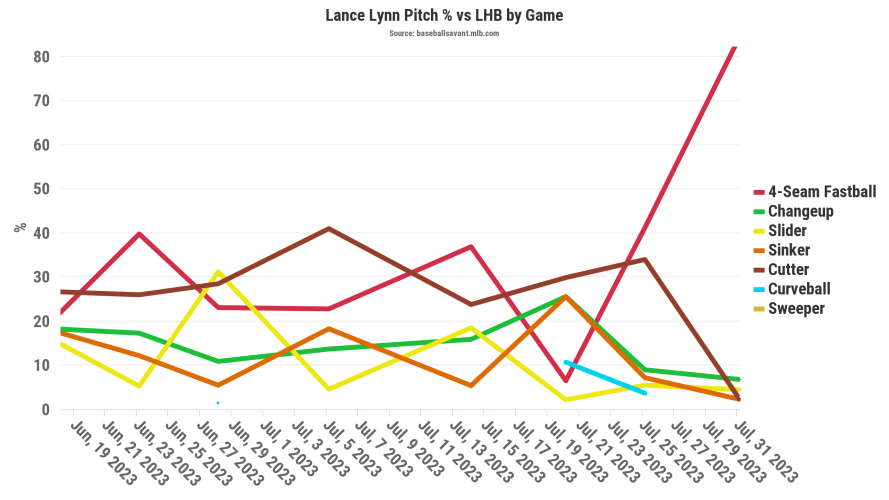
Lynn's primary weapon against lefties was the cutter, and the league hit .338 off the pitch while slugging .646. He did throw a fair amount of fastballs as well, and lefties hit .337 and slugged .761 off the pitch, but the Dodgers called for Lynn to throw 38 of 45 fastballs to lefties, and it worked as the only hits Lynn allowed were off other pitches. That also means the three homers he gave up came against righties, but Lynn threw five different pitches to righties while leaning most heavily on his fastball.
Lynn's fastball is still a good pitch by its metrics. Its spin, whiff rate and velocity are still very much in line with his measures from 2022, but the batted-ball outcomes have been harsh. The Dodgers have a great track record of turning trash to treasure, and Lynn's fantasy value certainly increases upon leaving Chicago. If his new team can tweak his approach so he isn't punished by lefties each start, the new location and new approach could be fun for his fantasy value the rest of this season.
Lucas Giolito also made his way to the West Coast, and he too has made some slight adjustments compared to his recent starts. Giolito has now had two starts for the Angels and appears to be focusing on fastballs and sliders while cutting back on his changeup and curveball:
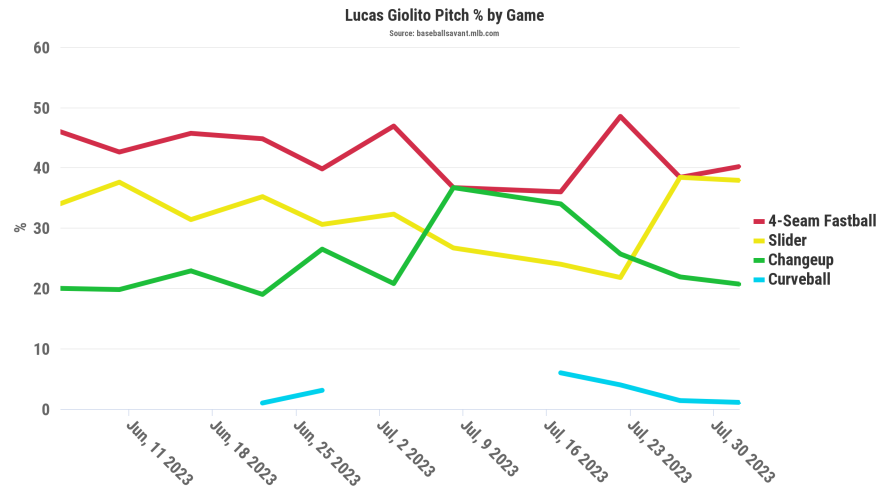
Giolito's pitches have had similar numbers across the board in terms of batting average as each sits in the .238-.248 range, but the 7 of his 25 homers allowed have come off changeups, a pitch he uses 23.2 percent of the time. Giolito has cut back on his changeup in the past two outings, but it doesn't appear to be as significant a change as some of the aforementioned pitchers have made. Any pitcher leaving Chicago is in a better place, but Giolito appears to be sticking with what got him here so far aside from using his slider a bit more.
Michael Lorenzen left a club with good infield defense to once which has struggled in that area with Philadelphia. Lorenzen has thrown seven different pitch types this season in his resurgence with Detroit, primarily featuring his four-seamer (.185 avg), slider (.243 average) and changeup (.169 average.) The other pitches are more show-me offerings except for his two-seamer (.350 average), a pitch he uses against righties as he does not often throw right-on-right changeups. Much like Giolito, Lorenzen doesn't look like he's making any changes with his new club:
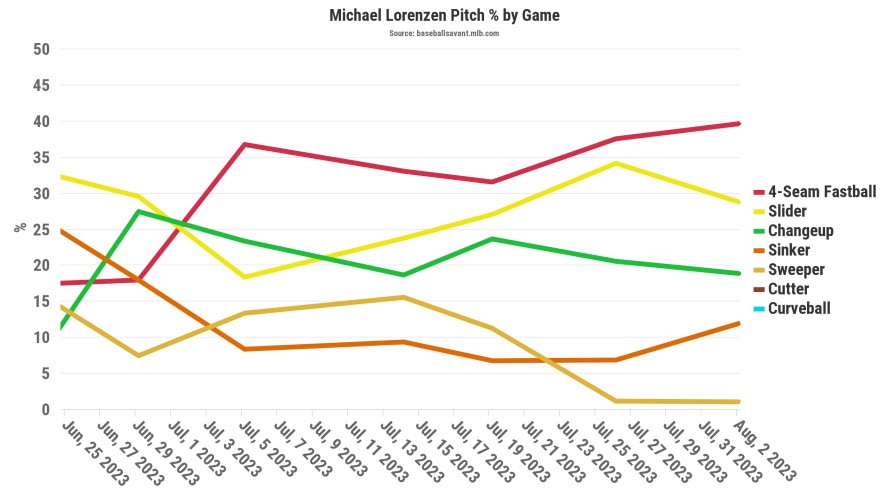
Lorenzen has a better bullpen supporting his outings now, but the defense is something to watch with him given his pitch-to-fate approach to most games.
All in all, the change of scenery for all of these guys is at least a push if not an improvement for the rest of the 2023 season, with Lorenzen being at the most risk of a backslide due to the defensive challenges of his new club.
















